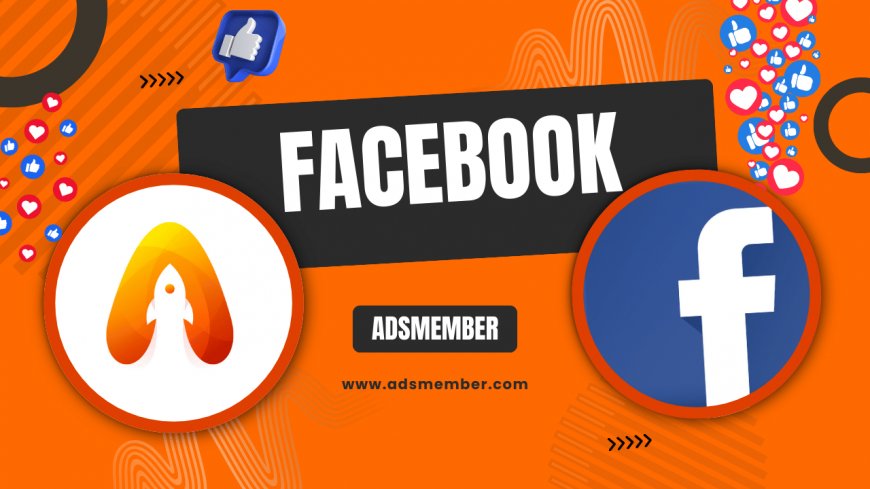How to Deactivate Facebook: Step-by-Step Guide for 2023
Learn how to deactivate Facebook with this easy 2023 guide. Follow step-by-step instructions to temporarily disable your account and protect your privacy.

Feeling overwhelmed by social media? Honestly, I’ve been there. If you’re looking to take a break from Facebook without losing your data, deactivating your account is a perfect solution. It’s a temporary step that hides your profile, posts, and activity while keeping everything intact for when—or if—you return. In this guide, I’ll walk you through how to deactivate Facebook with clear, updated steps for 2023. Plus, I’ll share unique insights and tips based on my experience as an SEO editor and social media strategist. Let’s dive in and reclaim your peace of mind!
Why Deactivate Facebook? A Personal Take
Social media can be a double-edged sword. In my opinion, taking a break from Facebook can reduce stress, improve focus, and even protect your mental health. Deactivation means your profile disappears from public view—no more notifications, no more drama. Unlike deletion, it’s reversible. According to a 2022 Pew Research study, 54% of users have taken breaks from social platforms due to privacy concerns or overwhelm (Pew Research). If that resonates with you, deactivation is a solid first step.
Key Benefits of Deactivation
- Your data stays safe for reactivation later.
- Friends can’t tag or message you during the break.
- Reduces exposure to targeted ads and data tracking.
How to Deactivate Facebook: Detailed Steps
Deactivating your Facebook account is straightforward, but the process can feel buried in settings. I’ve broken it down into simple steps based on the latest 2023 interface. Whether you’re on desktop or mobile, these instructions will work. Let’s get started—I’ve even added a few lesser-known tips to ensure a smooth experience.
Step 1: Log In and Access Settings
First, log into your Facebook account. Click your profile picture in the top right corner (desktop) or tap the three-line menu (mobile). Select Settings & Privacy, then click Settings. This is your control hub. Pro tip: Take a screenshot of your profile before proceeding, just in case you want a visual reminder of how things looked.
Step 2: Navigate to Deactivation
In Settings, scroll to Your Facebook Information. Click Deactivation and Deletion. You’ll see two options: deactivate or permanently delete. Choose Deactivate Account and hit Continue to Account Deactivation. Facebook might ask for your password here—standard security stuff.
Step 3: Customize Your Break
Facebook will ask why you’re leaving (pick any reason; it’s optional). You can also choose whether to stay logged into Messenger—handy if you still want to chat. Another option is opting out of email notifications. I recommend disabling them to avoid temptation. Finally, click Deactivate. Done!
Step 4: Confirm and Log Out
Once deactivated, your profile vanishes from public view. Friends won’t see your posts or tag you. Log out of all devices to ensure no accidental reactivation. Unique tip: Clear your browser cache after this to avoid auto-login prompts. Trust me, it’s a small step that saves hassle.
What Happens After Deactivation?
Curious about the aftermath? When you deactivate, your timeline, photos, and posts are hidden—not deleted. Friends can’t interact with you, but some data (like past messages) remains visible to others. Reactivation is as simple as logging back in. Honestly, I’ve deactivated for months before and felt zero pressure to return. It’s liberating!
Things to Note Post-Deactivation
- Third-party apps linked to Facebook may lose access.
- Your name might still appear in old group chats.
- Reactivation restores everything instantly.
Deactivation vs. Deletion: Which Is Right for You?
Struggling to decide? Deactivation is a temporary escape—think of it as a digital detox. Deletion is permanent, erasing your account for good after a 30-day grace period. In my experience, deactivation works best for short-term breaks. If privacy is your main concern, check out our Social Media Privacy Tips for more advice.
A Quick Comparison Table
| Feature | Deactivation | Deletion |
|---|---|---|
| Reversible? | Yes | No (after 30 days) |
| Data Retention | Kept | Deleted |
| Profile Visibility | Hidden | Removed |
Unique Tip: Download Your Data Before You Go
Here’s a gem most guides skip: download your Facebook data before deactivating. It’s a backup of your photos, posts, and messages. Go to Settings > Your Facebook Information > Download Your Information. Select what you want (I suggest everything), choose a format (HTML is user-friendly), and request it. It takes a few hours, but it’s worth the peace of mind. I did this during a break last year and was glad to have old memories saved offline.
Case Study: My 3-Month Facebook Break
Back in 2021, I deactivated for three months after feeling burned out by endless scrolling. The first week was tough—I kept reaching for the app out of habit. But by week two, I felt lighter. Productivity spiked, and I reconnected with real-life friends. Reactivating was seamless; everything was exactly as I left it. My takeaway? Deactivation isn’t just a button—it’s a mindset reset. If you’re on the fence, try it for 30 days and see how you feel.
FAQ: Can I Still Use Messenger After Deactivation?
Yes, you can! During the deactivation process, Facebook gives you the option to keep Messenger active. I’ve used this feature myself when I wanted a break from the main platform but still needed to chat with colleagues. Just check the box before confirming deactivation, and you’re good to go. Your chat history stays intact too.
FAQ: How Long Can I Keep My Account Deactivated?
There’s no time limit for deactivation. I’ve had friends keep accounts inactive for over a year with no issues. Facebook retains your data indefinitely until you either reactivate or request permanent deletion. Just remember, logging back in instantly reactivates your profile—so stay logged out if you’re serious about the break.
FAQ: Will My Friends Know I’ve Deactivated?
No, Facebook doesn’t notify friends when you deactivate. Your profile simply disappears from their view. They might notice if they try tagging you or searching your name, though. In my experience, most people don’t even realize unless they actively look for you. It’s a discreet way to step back.
FAQ: Can I Reactivate My Account Anytime?
Absolutely! Reactivating is as easy as logging in with your credentials. Everything—posts, photos, friends—returns instantly. I’ve reactivated after months with zero hiccups. Just be mindful: if you’ve cleared cookies or changed devices, you might need to verify your identity with a code.
What's Your Reaction?
 Like
0
Like
0
 Dislike
0
Dislike
0
 Love
0
Love
0
 Funny
0
Funny
0
 Angry
0
Angry
0
 Sad
0
Sad
0
 Wow
0
Wow
0

















































